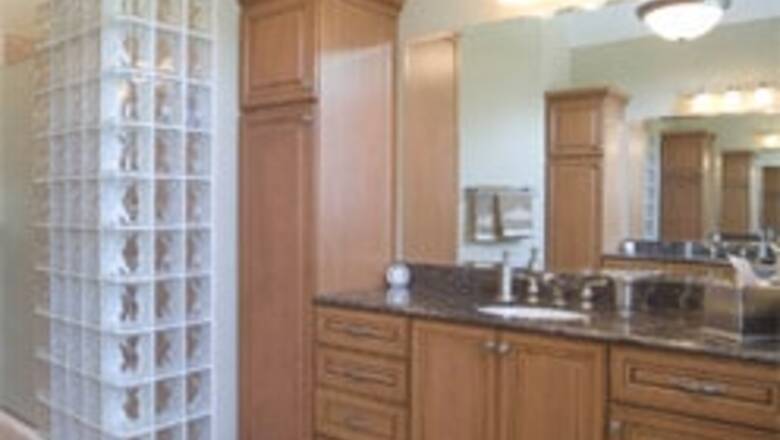
views
Mumbai: We have learnt from our ancestors that real estate investments have been the best investments and over a long term they give the family the sense of security and social stature. So go ahead and give yourself and your family a real asset, says Sandeep Sadh, CEO of Mumbai Property Exchange.com.
The ups and down of the jittery stock market are probably making you look for a safer investment haven with lesser turbulence. The real estate market, although a tortoise in the story here, can be a safer and long-term bet plus an asset that, in our country, brings with it, a high level of social respect.
If you are a new entrant into the property market, especially buying your first home as an investment then you have some respite from tax as well. Presently, you can get a tax deduction of up to Rs1.5 lakh on the interest you pay plus up to Rs 1 lakh on the principal.
Sandeep Sadh, CEO of Mumbai Property Exchange.com, tells you how you can make that perfect purchase, and how you stand to gain.
Making the perfect purchase
Step 1: Know your budgets, entry load and time frame
You need to know what you can afford to pay as EMI and the overall cost to buy the property with all incidentals like stamp duty, registration, car parking, club house charges and other sundry charges by the builder. Please remember that the entry load for investing in real estate market can be as high as 10%.
If you can spare anywhere upward of Rs 20,000 as EMI and a down payment of anywhere between Rs 5 lakh to Rs 15 lakh, you can begin investing in an under construction project with an average value of around Rs 25 to 30 lakh. This number can go up depending on your flexibility to pay more.
As a property buyer you get 3 dimensional benefits to buy under construction properties. Firstly, you can only pay around 10 to 30% in a project as down payment, which can be partially from your own savings. The balance amount can be paid over a period of time through a home loan. Secondly, the staggered payment is linked to the construction of the building. Typically, the amount is released to the builder/developer as per the slab and the EMIs also increase over the period of construction.
Hence, for the first year, the commitment level from the buyer is not more than 50 to 70%. If it is a larger township project then there could be some more delay and lesser payment outflow, as the time for completion of the project is nearly 3 years or so, thus staggering the payment further. Thirdly, with a low investment in the beginning the rate you have bought the property is frozen and you get the benefit of price escalation for nearly 3 years.
PAGE_BREAK
It is often witnessed that till the time the builder has a presence in the project or the property the prices are constantly revised upwards. Hence, in most of the under construction projects you will see that the builder is increasing the prices every quarter or less depending on the project, location etc. This also shows that the builder is giving returns to the investors periodically and the investors remain happy.
Since the markets have climbed a lot, if you are looking to buy a second home, stay put close to a Central Business District for the sake of sheer convenience of easy lease and re-sale.
For good returns one should stay invested ideally anywhere between 1 to 3 years and of course take further action depending on market conditions. You need to check with the builder if he is allowing you to sell or exit out of the project within 1 or 2 years. Some builders do not allow you to sell the property within a span of time or after making a certain amount of upfront payment. It is always advisable to get your documents. Certain builders/projects may not allow you to pay the stamp duty and registration fees as their Commencement Certificates are pending.
Step 2: Get your home loan approved
You can apply to any bank for a home loan. You can get a pre-approved home loan letter, which will mention your entitlement and approximate EMIs payable. Once you are armed with this letter you can go out shopping for the new property. It is a time consuming effort to get your self pre-approved but it helps you tremendously when you are ready to make a decision.
Step 3: General Information
This is the most important step and you have too many odds to deal with here. You need to look at a clean project by a reputed builder and you need to look for a project, which is under construction, which has a good 2-3 years for possession. Do not compromise here at all. Typically, if you buy a newly launched project or an under construction project, you will need to pay approximately anywhere between 25 and 50% payment in the first year. Your EMIs are dependent on the disbursal and you need to pay the same proportionately. After paying the initial deposit and your own contributions in the transaction you will need to make payments slab wise. This helps you plan your finances well enough and you can be easy on the EMIs at least for the first year or so. Banks usually fund you up to 85% of the total property cost and this can be inclusive of stamp duty in select cases.
How you stand to gain
The present day market is galloping and one should take a very conservative approach contrary to the market conditions. The last 2 quarters have shown returns on an average between 12 to 23% in most of the locations in the Mumbai market. The past 3 -12 months’ period has seen a steady growth in real estate prices and the same has been any where from 15% to 100%. Another aspect of the returns is if you give your property on leave and license basis, after it is ready you can get average returns varying from 4% to 9% or so depending on various factors safely.
Summing up: Look Before You Leap
You need to look at locations, which are under-priced or affordable today. Watch out also for the various roads, bridges and metro rail plans of the government and understand and anticipate what can happen to the location or an area after a few years from now.
Any investment in the price range of Rs 4,000 onwards till Rs 6,000 is seen as reasonable as the growth prospects still remains well in them. If you pick up any property at a higher price then you sure are taking a risk and in the event if there is a little bit of down turn or stagnation your returns will be affected.
You should look at projects where you have the required infrastructure like schools, hospital, proximity to railway station, highways, etc. This may be for your personal use or for an investment but the key factors will remain nearly the same for every one.
You should always get your document registered and pay proper stamp duty on it. If you sell your property within 3 years from the date of purchase your buyer will have to pay the difference in stamp duty only. Registration charges will be applicable again. This is a big help as you can negotiate this expense with the new buyer.
Unlike the stock markets or mutual funds, real estate is a fixed asset and hence there are always liquidity issues and one has to time the selling or exit well in advance, if one is looking to exit. Another aspect to keep in mind is that capital gains in real estate qualify as short term capital gains till the first three years from date of original purchase.
Every location has some character and significance. The art is to get into the right project with the right builder at the right time. Thane, Mulund, Navi Mumbai, Goregaon East, Powai, Malad West, Kandivali East, Lower Parel all are looking as good investment vistas but it should all depend on your budget. Do not over commit yourself.
The author, Sandeep Sadh, is CEO of Mumbai Property Exchange.com.
















Comments
0 comment